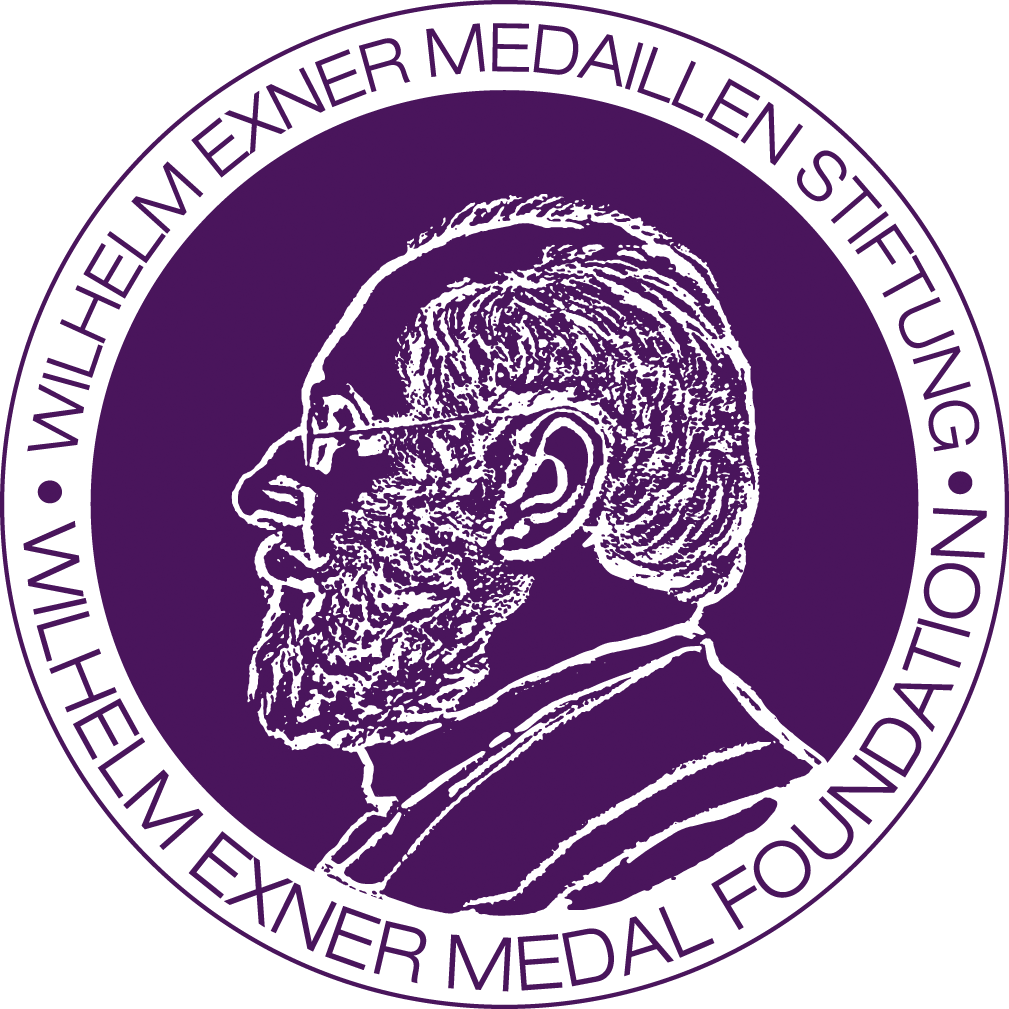The Wilhelm Exner Medals of 2021 could only be awarded in May 2022…
- Lectures 2024 | Guilio Superti-Furga
- Lectures 2024 | Ferdi Schüth
- Lectures 2023 | Omar Yaghi
- Lectures 2023 | Thuc-Quyen Nguyen
- Lectures 2023 | Daniel Anderson
- Lectures 2021 | Katalin Kariko
- Lectures 2021 | Luisa Torsi
- Lectures 2020 | Edward Boyden
- Lectures 2019 | Joseph DeSimone
- Lectures 2018
- Lectures 2017
- Lectures 2016
- Lectures 2015 | Gregory Winter

Luisa Torsi
Single-molecule detection with a large-transistor endows a clinician with the attacker advantage
Biomarkers are becoming the preferred highway toward early diagnosis of progressive diseases, such as tumors or neurodegenerative syndromes. When it comes to infective diseases the immunometric direct detection of a pathogen (instead of its DNA) is a faster way, as it requires no sample pretreatment. The possibility of detecting a marker (proteins, genomic strands as well as whole viruses or bacteria) in a peripheral biofluid such as blood or even saliva, makes the process also minimally invasive. The sooner the detection is, the earlier the diagnosis will be, the easier for a clinician is to fight the battle against a disease. Nowadays there is the possibility to detect a single strand of a mutated gene for the early diagnosis of tumours or to detect a single copy of a viral DNA. Still a commercial system that can reliably detect a single-proteins in a sample of 0.1 ml of a real biofluid, is not available.
Prof. Torsi with her group, has pioneered the field of Single-Molecule detection with a large Transistor – SiMoT in 2018. This established back then a world record of protein detection directly in a sample of whole bovine serum. The SiMoT platform is a bioelectronic system capable of detecting a single protein or a genomic marker in 0.1 ml of real, non-pretreated samples of blood or saliva. The system, that is under development also in the framework of a collaborative EU project (https://simbit-h2020.eu) coordinated by Torsi, can be manufactured at low-cost as a handheld device. The prospective is the development of ultra-sensitive, fast (15-20 minutes), low-cost and highly-reliable diagnostic systems for ultra-early screening of progressive diseases such as the tumour (e.g. pancreatic) as well as viral (e.g. SARS-CoV-2) and bacterial(e.g. Xylella fastidiosa) infections. Such a system holds the potential to revolutionize the current approach to point-of-care-testing, plagued with limits in terms of reliability and sensitivity. The future horizon is to get access to ultra-sensitive markers and pathogens detection where it is needed, namely at the doctor office, in a pharmacy or even at the patient’s home or directly in an olive threes field.
Co-Lecturers
Gottfried Strasser, Technical University of Vienna
Sensing with Monolithically Integrated Quantum Cascade Devices
Since their inception, quantum cascade lasers (QCLs)—based on intraband transitions in quantum wells—have been extensively studied in terms of bandstructure engineering, cavity design, and fabrication. Today, QCLs are compact, coherent light sources spanning the mid-infrared to terahertz range.
Photonic devices are widely used in environmental and industrial monitoring, as well as medical and biochemical diagnostics. Conventional optical sensors require separate light sources, interaction regions, and detectors. Prof. Strasser presents an advanced sensor concept using a bi-functional quantum cascade heterostructure, eliminating the distinction between laser and detector. This approach not only offers insights into light-matter interaction but also enables mutual commutation between lasing and detection, simplifying remote sensing setups and facilitating crucial miniaturization for integrated sensing devices.
Herbert Gold, Joanneum Research Graz
Ferroelectric devices and organic electronics integrated for sensor applications
Organic electronics excels in applications requiring simple circuits on flexible and/or large-area substrates. The first presented device, a large-area active matrix ferroelectric polymer sensor, which features screen-printed P(VDF-TrFE) transducers monolithically integrated with shadow-mask evaporated organic thin-film transistors (OTFTs) on a 12 cm-wide polymer foil, can be fabricated in just seven industrially scalable steps and could, for example, be used in robotics safety applications, due to its spatially resolved sensing and ability to detect movement of a human hand at a distance of 20cm.
The second device utilizes ferroelectric transducers on a 1 µm-thick, 2 mg Parylen substrate. When attached to the skin at the neck and paired with a 5.6 g wireless module, it accurately measures pulse waves, artery augmentation index, blood pressure, and heart rate, forming an imperceptible e-health patch. Integrated with a rectifier and storage capacitor, the same transducers function as a piezoelectric nanogenerator, delivering 0.25 mW/cm³—potentially enabling hourly data transmission in future energy-autonomous e-health systems, pending further validation.
Serpil Tekoglu, Johannes Kepler University Linz
DNA as functional material in organic and bio-electronics
The rapid growth of the electronics industry has intensified the environmental impact of electronic waste. Biodegradable natural materials, such as DNA, offer a sustainable alternative for photonic and electronic applications. Since the 2000s, DNA, DNA-lipid complexes, and nucleobases have been integrated into organic field-effect transistors, memory elements, and organic light-emitting devices, advancing “green” organic electronics. In 2020, DNA was first employed as a solid polymer electrolyte in organic light-emitting electrochemical cells.
Bioelectronics, an emerging field at the intersection of organic electronics and biology, leverages the ability of these materials to conduct both ions and electrons, which can enable seamless communication with biological systems. DNA, as a natural polyelectrolyte, combines ionic conductivity with the mechanical properties of soft plastics, making it ideal for transducers that translate the ionic conduction to electrical signals into a measurable rate. Recent work at Johannes Kepler University Linz demonstrated conductive polymer biocomposites using DNA as effective counter ions in applications like organic electrochemical transistors, highlighting their potential for future bioelectronics.


